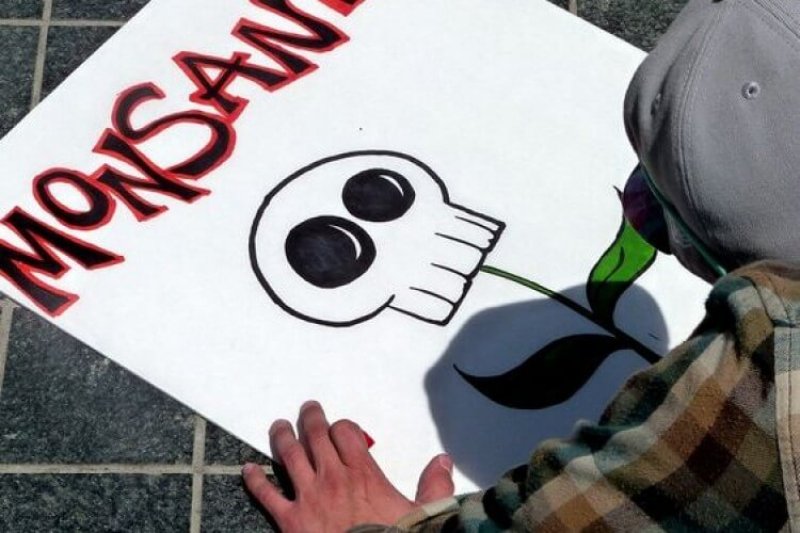I found that scientific spirit vividly present in the recollections that I garnered in recent years during interviews I did of more than two dozen scientists from a dozen different countries who were part of a group that had worked together from the 1960s to the 1990s in labs run jointly by two young Flemings, the late Jeff Schell, a geneticist, and his scientific partner, biochemist Marc Van Montagu in Ghent, Brussels, and eventually also Cologne.
The microbiologists, biochemists, molecular geneticists, and lab technicians who worked under Schell and Van Montagu were also young when they started. Most were of the first generation of their families to go to university, but they had seemingly quickly acquired the scientific spirit that Van Montagu and Schell had imbibed from their secondary school teachers, in this first generation after World War II when there were more good teachers in Belgium than could find university places.
In the interests of full disclosure, I note that I am a non-scientist nonfiction writer, who only became interested in researching and writing a book about these scientists’ story when I was sitting at dinner under the dome of Iowa’s state capitol while my good friend Marc Van Montagu was being presented in October 2013 with the World Food Prize for his and Schell’s labs’ having uncovered the initial facts that led to the creation of man-made genetically modified plants. (Two other scientists won the prize that day for GMO work, including a man from Monsanto.)
The Belgian scientist sitting next to me said, “You know, somebody should write up our discovery: how it happened, who did it, who helped, the mistakes, the bits of good luck. It is a thrilling story, but we scientists haven’t a clue how to write it so that ordinary non-scientists could understand it….”
And then he looked at me directly and said, “Why don’t YOU write it?” Unspoken was the glaring fact that six months earlier a new mass movement had spawned hundreds of “March Against Monsanto” rallies worldwide involving some two million people to draw attention to the dangers posed by genetically modified food and the “food giants” who produced it.
I accepted the challenge and what I wrote, after four years of research, was a non-academic book, without any jargon, for non-scientists like me. I called it Using Nature’s Shuttle: The making of the first genetically modified plants; it was published by Wageningen Academic Publishers NL, in November 2018.
Despite being written by me alone without any formal support or sponsorship, it was launched a month later in Belgium’s Palace of the Academies, in Brussels, hosted by the Flemish Institute of Biotechnology. The reason for the book’s prestigious launch is that it describes what Nobel laureate microbiologist Sir Richard Roberts calls “probably the greatest advance in agricultural biotechnology since the invention of agriculture.”
Their labs had started out trying to answer a fifty-year old question Jeff Schell had raised as worth pursuing: How do some members of a strain of soil bacterium known as Agrobacterium tumefaciens (tumor making soil bacterium) somehow induce heritable tumors in a variety of plants — and do it even when they are not present in the plants? No other bacterium seemed to be able to do it.
Schell and Van Montagu and the other scientists were pursuing this question, not to rid the world of plant tumors, but in order to better understand how things work in the world of microbes, the ultra-small units of DNA that were then for the first time fully visible, thanks to electron microscopes, with the scientists aided by the knowledge of the structure of DNA that Crick and Watson had discovered in the 1950s.

Schell had asked a new industrial engineer in the Ghent lab to look for what Schell suspected would be a particular kind of virus, a lysogenic phage, living inside the bacterium, that somehow could induce tumors in plants. He said that it might be supercoiled and that would affect where it would show up in the test tube after a tricky set of maneuvers, including many hours of the bacterium being spun in a centrifuge at very high speeds.
The engineer took his job seriously and worked well into the night most days for more than a year. Finally, late one night in March 1972, he found what seemed to be a small supercoiled band low down in the test tube, as Schell had predicted. He gave the tiny bit of DNA to the lab’s microscopy specialist and waited for Schell’s phage. But what he had found was not a phage but a plasmid — a kind of circular or supercoiled molecule that had only been discovered 20 years earlier — and this was a much bigger plasmid than ever recorded before.
A lot had been riding on it being a phage. Schell’s best doctoral student was working on phages in the expectation that this would be the one that would help unravel the secret of the plant tumors caused by something in the bacterium. A rival lab in another country seemed near to finding that a phage caused those tumors. There were also some phages able to combine so that they could resemble a plasmid. To confuse things more, the engineer soon found bigger plasmids that didn’t have any connection with plant tumors.
But while keeping all options open, a multistep process over the next several years, involving days and nights of meticulous work by various members of the lab, determined that this plasmid was always and only present in the strain of soil bacterium that induced plant tumors. The job of proving that took infinite care, not only by the postdocs and the doctoral students and technicians but even by the dishwashers, to assure that no contamination occurred to ruin the experiments. It involved all-out long-term teamwork by a bunch of young people who were not paid for their extra hours at work.
The discovery of the crucial role of the plasmid inside the soil bacterium turned out to be the key to figuring out not only how the soil bacterium induced plant tumors, but how scientists could use parts of the plasmid to, instead of inducing tumors, insert DNA in plants to make more desirable plants. Thus was conceived the genetically modified plant, a product of basic research.
Drawing on my scientist informants, and going back to them repeatedly, I did my best to record over many pages exactly what these scientists had done, why, and how. And that is how I came upon those precious moments when the scientific spirit showed itself. I learned that fundamental research, the quest for knowledge, can lead to unexpectedly useful developments; and that people harnessed together by a shared set of goals can accomplish much more than people working alone and afraid that someone will steal their data.
But when these scientists’ planned gift to the world, and especially to the poorest on the planet, became patent-protected products, commercialized by Monsanto and other big agrichemical companies with powerful marketing networks, things changed.
Monsanto’s GM soybeans were on their way in 1996 to European markets and had just received EU permission to be sold there, when they ran into a buzz saw of opposition from public interest groups, such as Greenpeace, and EU member governments — starting with France, whose traditional agriculture depends on the original Common Market treaty’s guarantee of subsidies, to which were later added new beneficiaries from the East bloc when they became EU members, bringing their similar farming traditions.
By then, organic farming, begun after World War II, had become an emerging player in Europe and wanted no competition from cheaper farm products from the US. If that were not enough to make GMOs unwelcome in many places, a mere five days after the EU agreed to the entry of Monsanto’s GM soybeans, an unrelated food scandal emerged when the British Prime Minister had to announce that, despite UK governmental assurances to the contrary, British beef from animals with Mad Cow disease had been implicated in a new, human version of Mad Cow that had killed a number of Britons and went on to kill more of them.
Public outrage at this British incident of food poisoning in conventionally raised cattle spread to many other countries and came quickly to include a distrust of all government assurances on food safety, including the new GM foods. Lobbies and spokespeople for these various anti-GMO interests separately and together spread fear and distrust about GM foods and related products world-wide, a phenomenon that continues up to today.
Since 1996, 5.8 billion acres of GM crops have been planted, and more than 2,000 publications have addressed and confirmed their food and environmental safety. Also, hundreds of regulatory and food safety assessments, notably by the WHO, the National Institutes of Science, Medicine, and Engineering, all the most prestigious European scientific bodies, and by GM exporting and importing countries have, on the basis of their research, regulatory assessment, and/or history of use, found no evidence of harm from GMOs.
Meanwhile, in 2000, various anti-GMO well-funded efforts led to the adding of the Cartagena Protocol on Biosafety to the UN Convention on Biodiversity. The protocol cites a “precautionary principle” to permit any signatory country to ban GM products about which the signatory has doubts of their safety, without requiring the signatory to produce any evidence of their causing present or future harm. In 2018, the European Court of Justice added to the list of GMOs already banned entry into Europe by forbidding the entry into EU countries of any gene-edited food or products. A knock-on effect of these EU bans has been to discourage less developed countries, such as India, that the GM inventors had had in mind as most needing GM foods, with their less wasteful use of soil and other advantages, from growing GM crops; such countries, to gain foreign currency, also need to be able to export their foods to the EU.
The book therefore ends on a somber note, providing a warning to scientists that they need to take responsibility for promoting and defending the relevance of their science, even after it has left their lab. The scientists have literally all the facts on their side, but facts are not enough to combat the huge propaganda machine on the opposite side. What happened to GM crops and the people who made them seems likely now to start happening to gene-edited crops and the people who are making them.
Judith M. Heimann, a retired American diplomat, is the author of three books of history and biography, two of which became television documentaries. As a diplomat, she spent many years in Belgium and came to know well the leading scientists involved in making the first GM plants. She speaks French, Dutch/Flemish and Indonesian/Malay. Follow her on her website.
This article was originally published on May 7, 2019.































